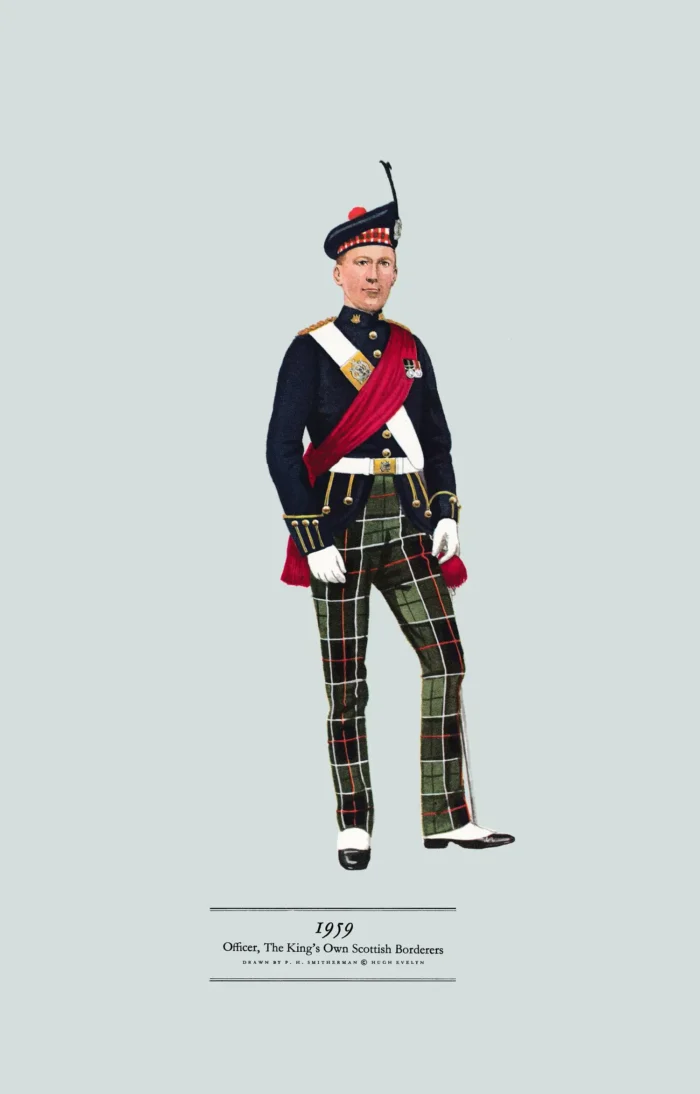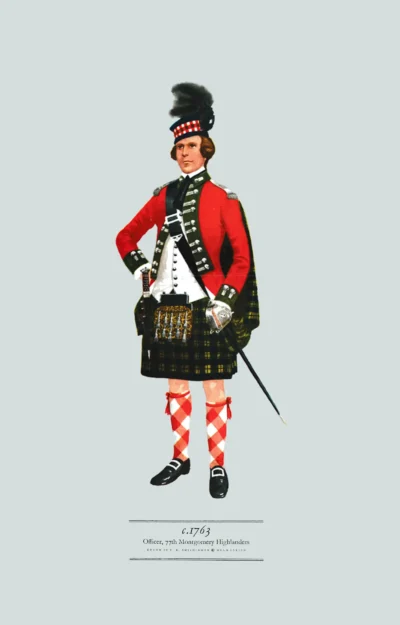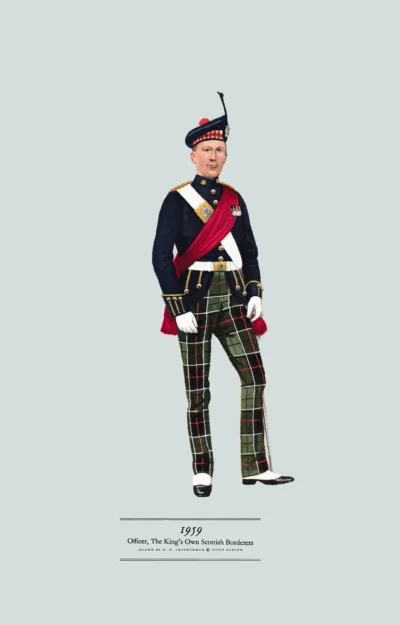Officer, King’s Own Scottish Borderers (QOSB), 1959
Original price was: £20.00.£20.00Current price is: £20.00.
Raised 1689; from 1887 The King’s Own Scottish Borderers; from 2006 Royal Regiment of Scotland – 1 SCOTS (scroll down for a more detailed Description)
Published 1963 by © Hugh Evelyn Limited; drawn by Colonel Philip Henry Smitherman (1910-1982), Royal Corps of Signals
Size: c. 24.5 x 37.5 cm [9 ½ ″ x 14 ½ ″] (may vary slightly from printers’ cut 50 years ago)
Printed on on medium cardstock weighing 144 g/sm2 faced in light greyish blue (RGB c. d5dede)
Print is STANDARD size – shipping is the same for 1 to 10 prints (based on largest print size in your order) – see Shipping & Returns.
In stock
Description
The regiment was raised in 1689 by David Melville, 3rd Earl of Leven to defend Edinburgh against the Jacobite forces of James II. It’s claimed that 800 men were recruited within the space of two hours. The regiment’s first action was at the Battle of Killiecrankie on 27 July 1689. Although this battle was a defeat for the Williamite army, the Jacobite commander, John Graham, 1st Viscount Dundee (Bonnie Dundee), was killed by a volley fired by Leven’s Regiment, bringing an end to James II’s attempt to save his throne in Scotland. This officer shows the dress adopted by Lowland Regiments after the Second World War. Apart from the substitution of a blue doublet for a scarlet one, there had been little alteration since 1910. This was the only regiment to wear white Highland gaiters with trews. The Highland Light Infantry used to wear them in levee dress, and in 1948 became fully kilted and gaitered, but then, having amalgamated with the Royal Scots Fusiliers, ceased to wear them. The Inverness flaps on the doublet have been retained. They were first worn by Highland regiments in 1856, then by Lowland regiments too from 1881. They were then given up by Highland regiments and were worn by Lowlanders only. No doubt the lack of a sporran made the provision of pockets somewhere on the doublet a necessity, and, worn over trews, the doublet needed more emphasis than when worn over the kilt. The effect was smart, practical and traditional, and Lowland regiments did well to retain a little dash and colour in a drab world. The regiment was one of only five in the line infantry never to have been amalgamated before 2004. The King’s Own Scottish Borderers (KOSB) amalgamated with Royal Scots on 1 August 2006 taking the name Royal Scots Borderers, 1st Battalion Royal Regiment of Scotland or 1 SCOTS.
Additional information
| Weight | 0.0123 kg |
|---|---|
| Dimensions | 23 × 37 cm |





